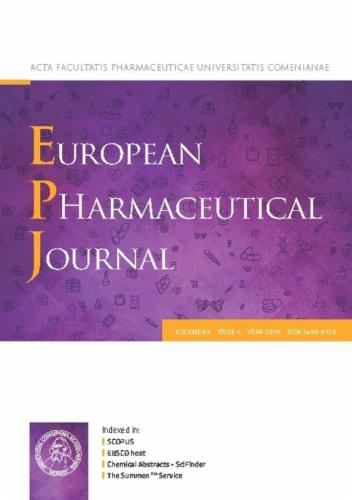Particulate contamination in parenteral fluid from glass ampoules: compliance assessment and comparative analysis of needle types and ampoule-breaking strategies
IF 4.3
3区 医学
Q1 PHARMACOLOGY & PHARMACY
引用次数: 0
Abstract
Particulate contamination in parenteral fluid poses potential risks when administered. Guidelines recommend using filter needles during fluid withdrawal from glass ampoules. However, studies supporting these guidelines exhibit certain limitations, preventing definitive conclusions regarding the superiority of filter needles over conventional needles. Additionally, no assessment of compliance with the European Pharmacopoeia (Ph. Eur.) and United States Pharmacopoeia (USP) standards on particulate contamination has been conducted for either needle type. The aim of this study was to determine if both needle types, combined with either a manual breaking technique or an ampoule-breaking device, met these standards. Ten drugs were selected to assess particulate contamination in parenteral fluid after fluid withdrawal from glass ampoules using a filter or conventional needle, combined with either a manual breaking technique or an ampoule-breaking device. Each drug included 10 samples, totaling 100 samples per method and 400 samples overall. Samples underwent visual inspection and sub-visible particle analysis using the light obscuration (LO) particle count test. Results were compared to Ph. Eur. and USP standards and the Friedman test was used to assess differences in sub-visible particles between the four methods. Both needle types, in combination with either the manual breaking technique or the ampoule-breaking device, complied with Ph. Eur. and USP standards. Furthermore, no statistically significant differences were observed between the four methods regarding particles ≥10 µm (p = 0.227) and ≥25 µm (p = 0.237). Both needle types and breaking techniques are suitable for use during the aseptic drug reconstitution of glass ampoules. However, based on these results, the use of filter needles for fluid withdrawal from glass ampoules did not demonstrate additional benefit. Omitting them could potentially save time and reduce unnecessary waste.

来自玻璃安瓿的肠外液中的微粒污染:依从性评估和针型和安瓿破瓶策略的比较分析
注射时,肠外液体中的微粒污染会造成潜在风险。指南建议在从玻璃安瓿中取出液体时使用过滤针。然而,支持这些指导方针的研究显示出一定的局限性,无法得出关于过滤针优于传统针的明确结论。此外,没有对任何一种针头是否符合欧洲药典(Ph. Eur.)和美国药典(USP)关于颗粒污染的标准进行评估。本研究的目的是确定两种针头类型,结合人工破裂技术或安瓿破裂装置,是否符合这些标准。选择10种药物,在使用过滤器或传统针头,结合人工破裂技术或安瓿破裂装置从玻璃安瓿中取出液体后,评估肠外液中的颗粒污染。每种药物包括10个样本,每种方法总共100个样本,总共400个样本。使用光遮蔽(LO)颗粒计数测试对样品进行目视检查和亚可见颗粒分析。结果与Ph. Eur。采用USP标准和Friedman检验来评估四种方法之间亚可见颗粒的差异。两种针型,结合手动破瓶技术或安瓿破瓶装置,都符合欧洲标准。和USP标准。此外,对于颗粒≥10µm (p = 0.227)和≥25µm (p = 0.237),四种方法之间无统计学差异。针型和断针技术都适用于玻璃安瓿的无菌药物重构。然而,基于这些结果,使用过滤针从玻璃安瓿中提取液体并没有显示出额外的好处。省略它们可能会节省时间并减少不必要的浪费。
本文章由计算机程序翻译,如有差异,请以英文原文为准。
求助全文
约1分钟内获得全文
求助全文
来源期刊
CiteScore
9.60
自引率
2.20%
发文量
248
审稿时长
50 days
期刊介绍:
The journal publishes research articles, review articles and scientific commentaries on all aspects of the pharmaceutical sciences with emphasis on conceptual novelty and scientific quality. The Editors welcome articles in this multidisciplinary field, with a focus on topics relevant for drug discovery and development.
More specifically, the Journal publishes reports on medicinal chemistry, pharmacology, drug absorption and metabolism, pharmacokinetics and pharmacodynamics, pharmaceutical and biomedical analysis, drug delivery (including gene delivery), drug targeting, pharmaceutical technology, pharmaceutical biotechnology and clinical drug evaluation. The journal will typically not give priority to manuscripts focusing primarily on organic synthesis, natural products, adaptation of analytical approaches, or discussions pertaining to drug policy making.
Scientific commentaries and review articles are generally by invitation only or by consent of the Editors. Proceedings of scientific meetings may be published as special issues or supplements to the Journal.

 求助内容:
求助内容: 应助结果提醒方式:
应助结果提醒方式:


